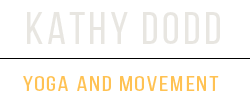The answer is more complicated than just standing up straight.
Our posture can signal a lot of things about us. Confidence, pride, even a sense of strength and power.
But posture is also simply the position you are holding your body in. The ‘proper’ posture is the one that serves what you are doing at the time! If you are cooking your posture will be different than when you are out for a walk or holding a baby for example. Holding yourself rigidly in any one type of posture for too long is not great. In other words the only bad posture- in this context – is one you have been in for too long.
The concern about posture we have as we age is rounding in the upper back. This is called hyperkyphosis and it may seem like a posture thing but it is actually related to a more serious issue- osteoporosis. As people age, one of the most common sites of bone density loss is the spine. This can manifest in the upper back and this tendency is largely genetic. So if your mom or grandmother had it, you may also.
Another major factor that contributes to spinal curvature is the change in the intervertebral discs. Between each vertebra there is a gelatin-like cartilage that separates the vertebra. With age, these discs harden and lose flexibility with the inevitable result of compressed total length of the spine and a forward tilt.
Muscle mass also changes with age with a process called sarcopenia. Muscles shrink and may be replaced by fat and/or fibrous tissue either of which weakens the muscle. The loss of muscle strength with age contributes to the curvature of the spine.
One study* that looked at this condition points out the functional limitations of having hyperkyphosis
“Excessive kyphosis has detrimental effects on physical performance, the ability to perform activities of daily living, and overall quality of life. Women with hyperkyphotic posture demonstrate difficulty rising from a chair repeatedly without using their arms, significantly poorer balance and slower gait velocity, wider base of support with stance and gait, and decreased stair-climbing speed—impairments that have been associated with increased risk for falls. In addition, osteoporotic women with hyperkyphosis have increased postural sway compared to those with normal posture. Hyperkyphosis is also associated with self-reported decline in physical functioning. Women with hyperkyphosis report greater difficulty reaching and performing heavy housework and score lower on the basic activities of daily living scale compared with their peers.
The good news is that if you do some upper back exercises on a consistent basis, you can avoid the look of a rounded spine.
This same paper* looked at women who did (or did not do) spinal extension exercises.
“In an investigation among 81 women, aged 50 to 59 years, participants were instructed to perform spinal extension strengthening exercises 3 times per week for 1 year. Only 15 of these women complied with the exercises 3 times a week and 20 did not do any of the exercises. The group of 15 women who were compliant were compared to the group of 20 who were not compliant. Kyphosis and forward head posture were significantly reduced among the compliant exercise group compared with the noncompliant group.”
So it is possible to correct and avoid that rounding of the spine if you do the thing.
I did a whole class on this – the recording is available here until November 30 2022.
If you don’t have time for a full class, here is a short video with some of the exercises we did.
Share this blog post with anyone you think might like it – and encourage them to sign up here if they want to know more about strength training and mobility.
thanks for being here!
xo
kathy
*https://www.ncbi.nlm.nih.gov/pmc/articles/PMC2907357/
